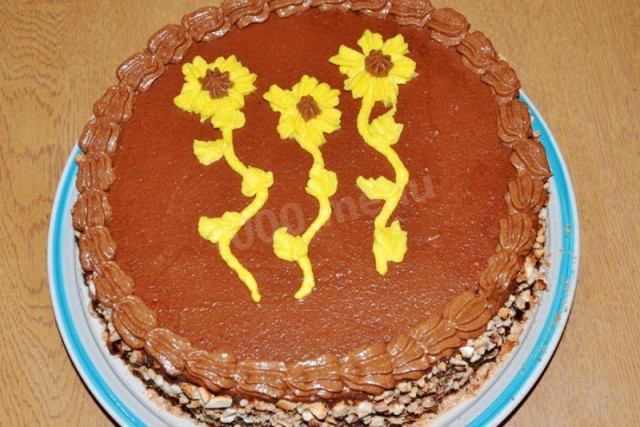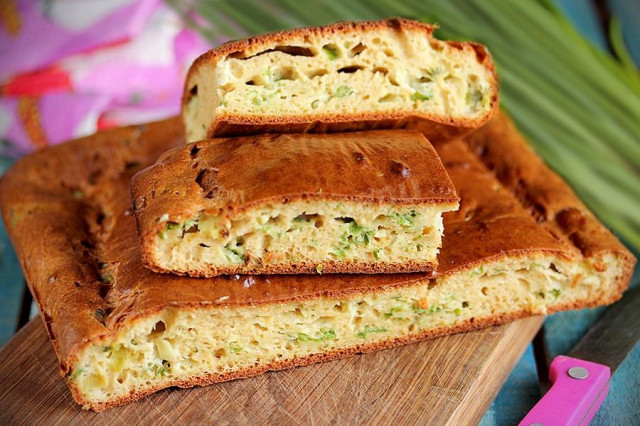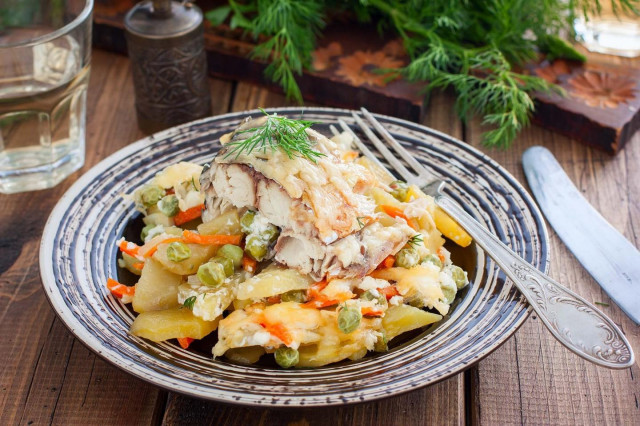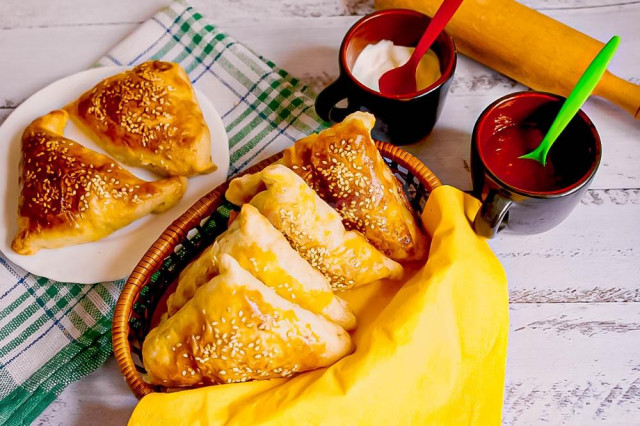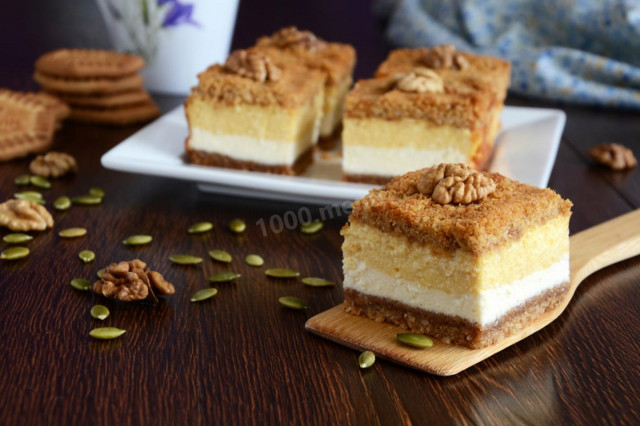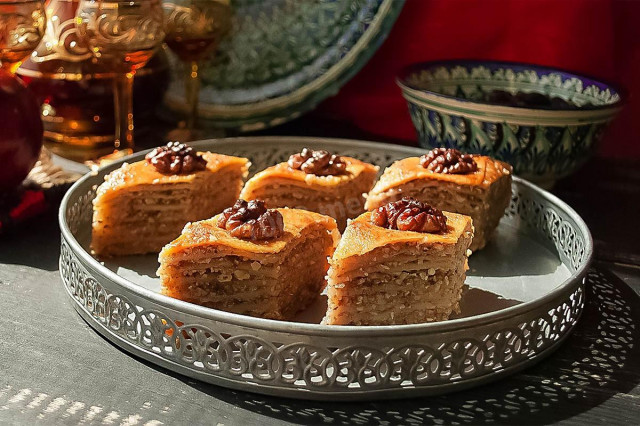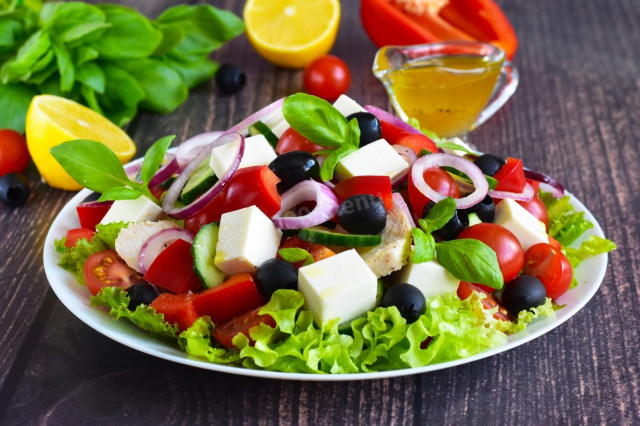Composition / ingredients
Step-by-step cooking
Step 1:
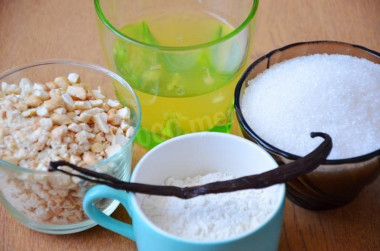
Day one. We divide the eggs into whites and yolks, put the yolks all together in a separate container, tighten it with a film and hide it in the refrigerator, the proteins need to be fermented, that is, to keep them at room temperature for at least 12 or 24 hours, during this time the proteins will ferment or age. Proteins are divided into two containers of 4 pieces, for each cake separately, also tighten tightly with a film and leave at room temp. it's better where it's warmer, you need 30-40C.
Step 2:
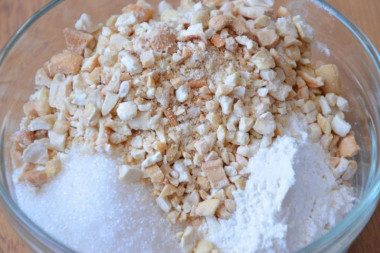
Day two - bake cakes. I prepared the dough for each cake separately, since I have an old mixer and it is quite difficult for it to beat 8 proteins well, if your technical capabilities allow you, then you can prepare the dough for 2 cakes at the same time, provided that you will bake together, since such a dough is not intended for downtime, after kneading, it should be baked immediately.
Step 3:
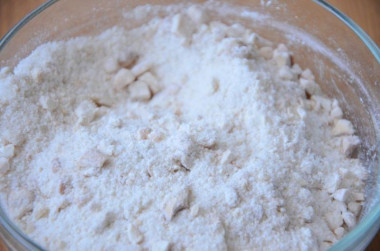
So, to bake one cake, we need to mix sugar in a container (2 tablespoons need to be postponed, we will add this sugar while whipping proteins), flour and chopped nuts, mix everything well.
Step 4:
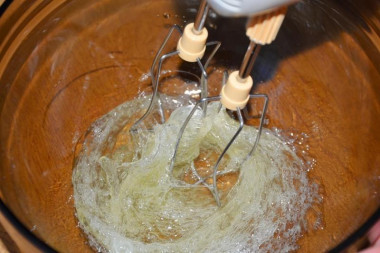
Whisk the proteins, start whipping at the lowest speed and as the proteins increase in volume, we increase the speed.
Step 5:
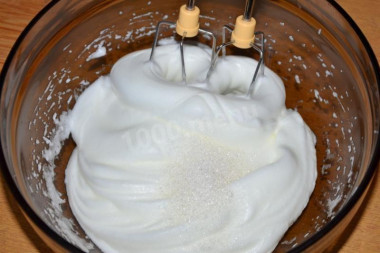
As soon as the proteins have turned into a thick mass, add the postponed 2 tbsp.l. sugar and whisk until firm peaks (I check this very simply, if you turn the bowl over, the proteins will remain in place, just be careful that the proteins do not fall out on the table).
Step 6:
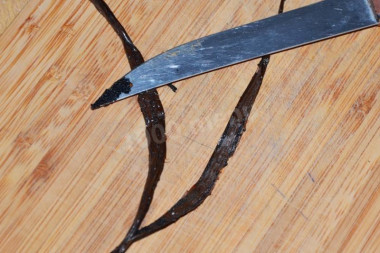
Vanilla.
Step 7:
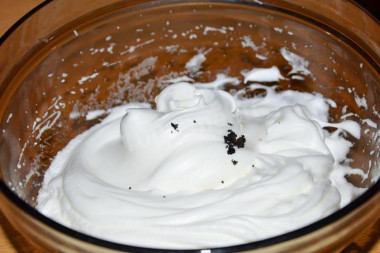
When the whites are whipped, add the seeds of half a vanilla pod
Step 8:
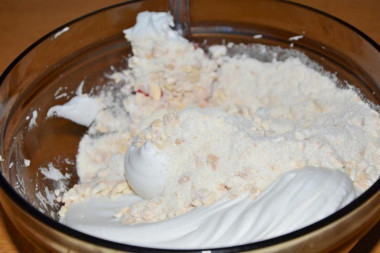
And dry mix, preferably in portions,
Step 9:
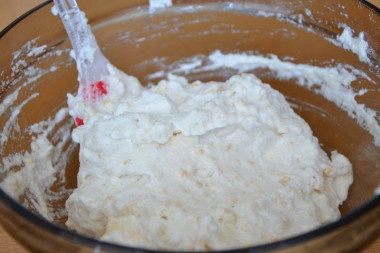
And gently but quickly stir until smooth.
Step 10:
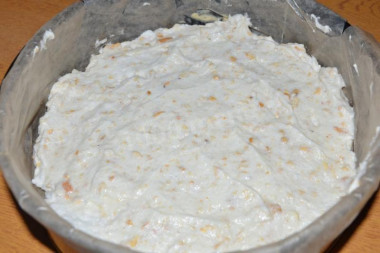
It is very important that the mass settles as little as possible and does not lose its volume. We put the finished dough into the prepared form (the bottom and sides of the form are lined with paper and carefully lubricated with butter, since such cakes are very fond of sticking). Cakes are baked in a preheated oven to 150C for about 1.5 hours, the finished cake should be completely dry, watch out for it, so as not to over-dry.
Step 11:
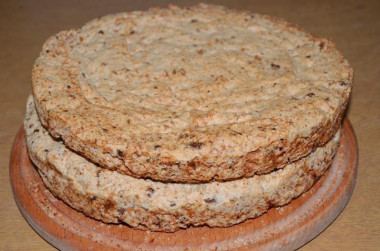
Sometimes it happens that the cake is completely dry on top, and when you pull it out of the mold, it turns out that it is still slightly wet at the bottom, then just put the cake in paper, but without the mold it will dry a little more. Ready-made cakes are allowed to stand for 12 hours. (in practice, I tried not to stand, it turns out no worse, but only the cakes are more brittle).
Step 12:
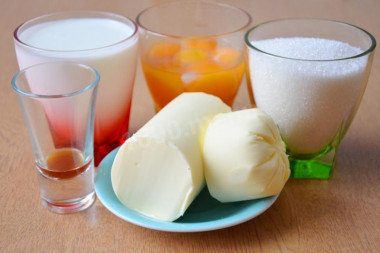
The third day - we prepare the cream and assemble the cake. For the Kiev cake, Charlotte butter cream is used, this is a very delicious cream, it is prepared in two stages, first the custard part is prepared on the yolks, then the brewed yolks are introduced into the beaten butter.
Step 13:
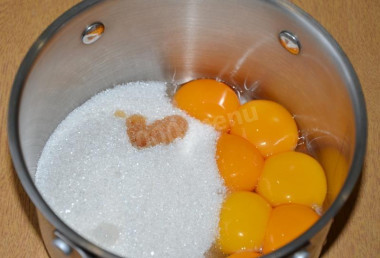
For the custard part, we take our forgotten yolks out of the refrigerator, add sugar and vanilla tincture (at this stage I was a little stupid, it would be better to add vanilla after cooking, and not before, if you use vanilla sugar, then add it at any time of cream preparation).
Step 14:
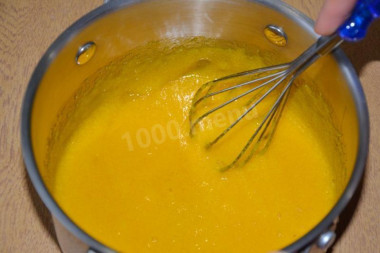
Mix everything well, you don't need to beat the mass especially, just try to make the sugar dissolve as much as possible, and by the way, you can stir in the same saucepan in which we will cook, why dirty an extra bowl.
Step 15:
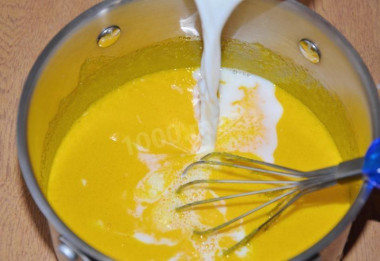
Now we introduce milk into the yolks, I add cold but boiled. Mix everything and send it to medium heat. Cook until thickening, stirring constantly, how long it will take you, I can't say, but it took me 10 minutes.
Step 16:
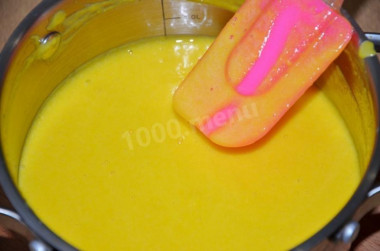
It is very important, do not let the mass boil, otherwise the yolks will curdle and you will get sweet scrambled eggs, and you will just have to throw it away, bring it only to the first bubbles. It is also very convenient to check the readiness of the cream, if you swipe your finger along the shoulder blade that you are interfering with and the resulting groove does not stick together, but remains a track, then the cream is ready (you can see in the photo, but check carefully, since the cream is very hot!).
Step 17:
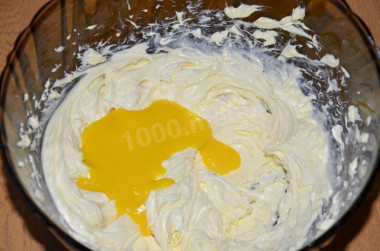
Let the finished custard part cool completely! This is important, if you add a warm mixture to the oil, it will just flow. When the custard part has cooled down, we cook further. Beat the butter at room temperature until fluffy and now add the custard in small portions (1-2 tbsp. l.),
Step 18:
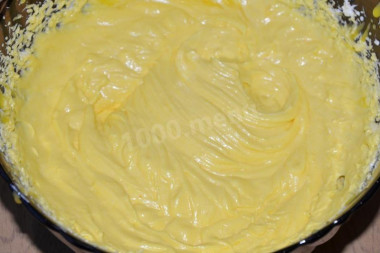
Carefully whisking each time, if desired, 1-2 tablespoons of cognac can be added to the cream.
Step 19:
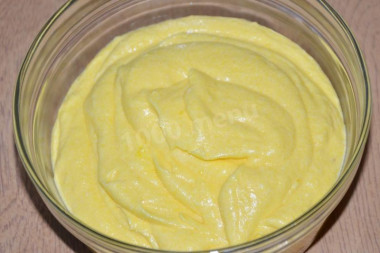
That's all the cream is ready.
Step 20:
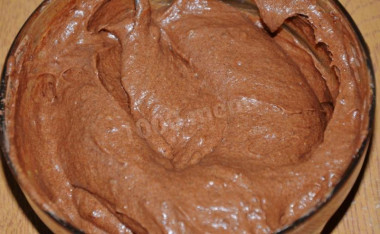
If you want to decorate a cake like me, now we divide the cream into three parts - the first is about 3 tbsp.l. for decorating flowers, leaves, etc., the second part is 5-6 tbsp.l. we add 1- 1.5 s.l. cocoa to it, it will be chocolate cream for coating the top and edges the rest of the cake will go to lubricate the cakes in the middle.
Step 21:
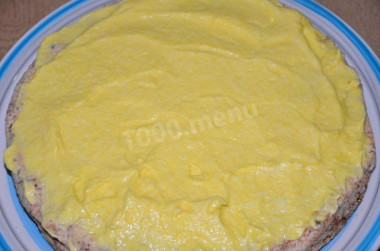
We assemble the cake - we spread one cake, lubricate it with white cream, cover it with a second one.
Step 22:
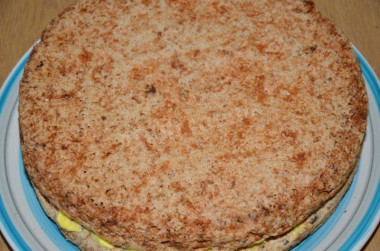
We lubricate the top and sides with chocolate cream, I have a little cream left and I made a border around the edge with it using a pastry bag.
Step 23:
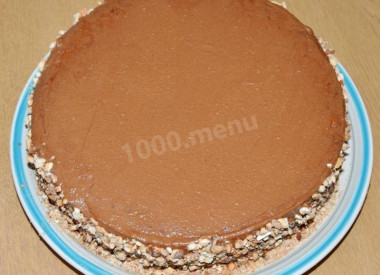
Sprinkle the edges of the cake with crushed nuts, and draw whatever you like from the remnants of the cream on top, I don't get much yet, so I decorated it with flowers))) I apologize in advance for their appearance, I'm still studying)
Step 24:
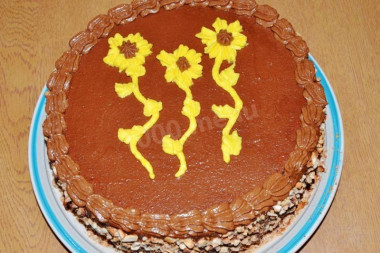
That's it, the cake is ready! We give it to soak for a couple of hours at least, or you can leave it overnight, during this time the cakes will soften a little, but they will still remain crisp. Enjoy your meal!
Caloric content of the products possible in the composition of the dish
- Whole cow's milk - 68 kcal/100g
- Milk 3.5% fat content - 64 kcal/100g
- Milk 3.2% fat content - 60 kcal/100g
- Milk 1.5% fat content - 47 kcal/100g
- Concentrated milk 7.5% fat content - 140 kcal/100g
- Milk 2.5% fat content - 54 kcal/100g
- Granulated sugar - 398 kcal/100g
- Sugar - 398 kcal/100g
- Vanilla - 288 kcal/100g
- Butter 82% - 734 kcal/100g
- Amateur unsalted butter - 709 kcal/100g
- Unsalted peasant butter - 661 kcal/100g
- Peasant salted butter - 652 kcal/100g
- Melted butter - 869 kcal/100g
- Cocoa powder - 374 kcal/100g
- Ordinary cognac "three stars" - 239 kcal/100g
- Cognac - 239 kcal/100g
- Cashews - 561 kcal/100g
- Wheat flour - 325 kcal/100g
- Egg yolks - 352 kcal/100g
- Vanilla sugar - 379 kcal/100g
- Egg whites - 44 kcal/100g

